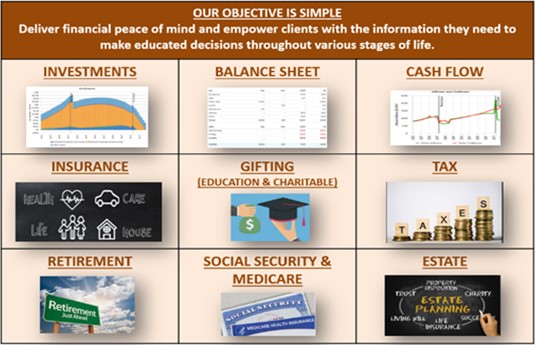After a nice start to 2023, the market soured in the 3Q. Both stocks and bonds struggled against a backdrop of too many conflicting signals. Some data such as resilient employment and consumer spending suggests inflation is easing and economic recession may be avoided; but a contracting money supply, abruptly rising interest rates and energy prices, and uncertain government spending suggest economic pressure is building and is causing stock prices to contract.
Hamas’ attack on Israel over the weekend (on top of ongoing situation between Russia/Ukraine) seems to create additional fog in the short-run. We’ll continue to monitor what these developments may mean for the market. In the meantime, this quarter’s newsletter reviews:
- “Too Many Moving Parts” – we explain how many different moving parts not functioning together, can create a frustrating market environment with elevated volatility but no apparent trend.
- “New Reality” – Interest rates are now at their highest level in 16 years. While it feels unfamiliar, history would suggest rates at this level are not a bad omen for the future, but they do not make economic conditions easy either. How long might rates stay high if inflation is improving and what does it suggest for financial assets?
- “Flying Blind – Ecstatic Appreciation” – Bill offers quick reflection and appreciation for the opportunity to work with so many wonderful clients over his 45 year career. As throughout life, “Flying Blind” also offers relevant parallel as investors often feel foggy about the future.
- “The Wealth Feedback Loop” – the wealth effect can cause individuals to alter their consumption behavior, and we discuss why it is important to balance significant financial decisions with actual income rather than fluctuations in net worth due to market variables.
Click here for a Printer Friendly PDF which also includes benchmarking and data on investments widely utilized in our current tactical strategies.
Continue reading→

 Many clients in the Columbus area, as well as other urban areas, are well aware of urban sprawl. It’s seems to be a growing concern and frustration. Developing and sticking to a “grand plan” can be challenging for local politicians. Despite good intentions, communities often deviate from the grand plan as differing views and priorities are brought forward. These quickly distract from the big picture.
Many clients in the Columbus area, as well as other urban areas, are well aware of urban sprawl. It’s seems to be a growing concern and frustration. Developing and sticking to a “grand plan” can be challenging for local politicians. Despite good intentions, communities often deviate from the grand plan as differing views and priorities are brought forward. These quickly distract from the big picture.